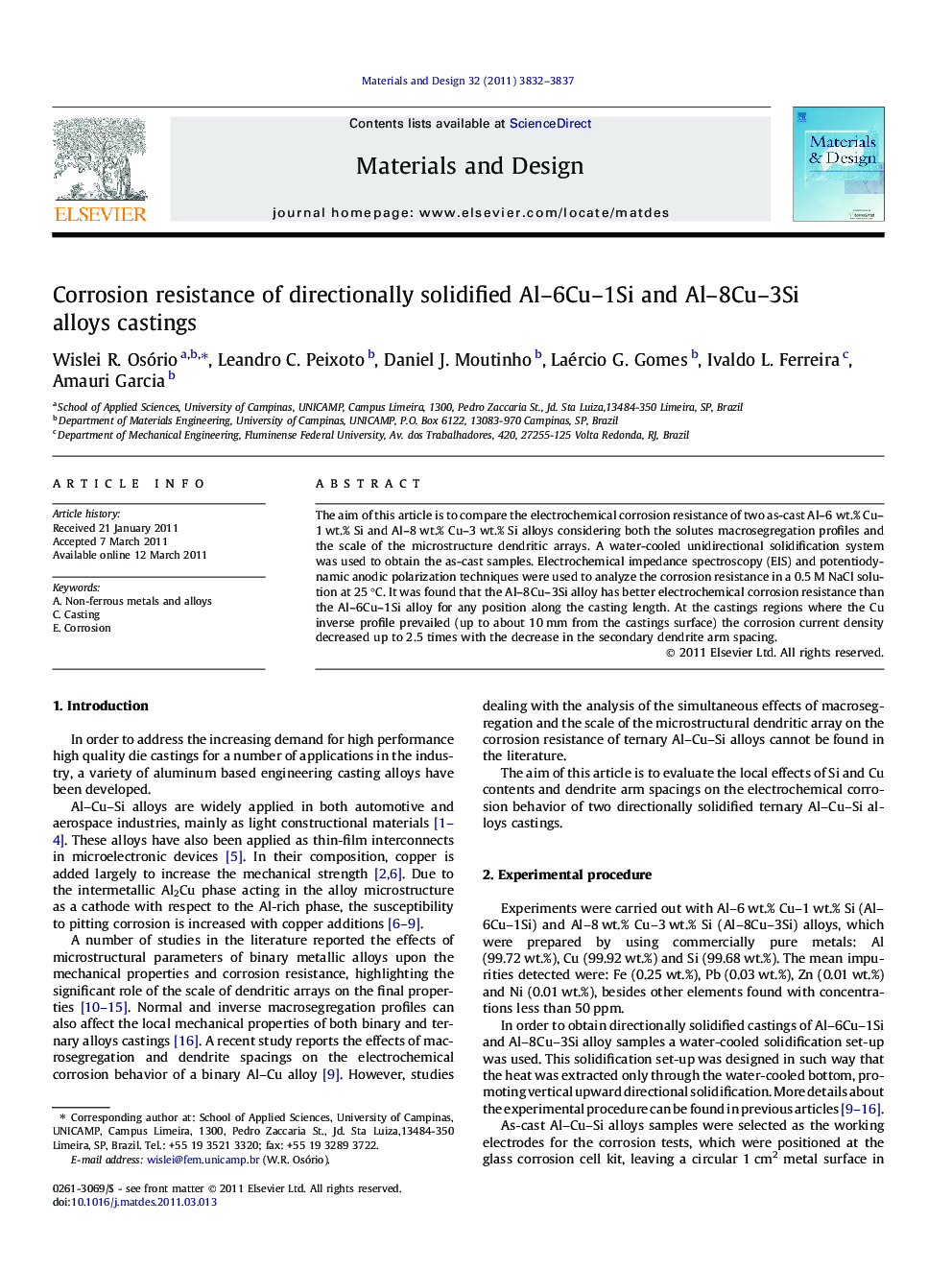| Article ID | Journal | Published Year | Pages | File Type |
|---|---|---|---|---|
| 831509 | Materials & Design (1980-2015) | 2011 | 6 Pages |
The aim of this article is to compare the electrochemical corrosion resistance of two as-cast Al–6 wt.% Cu–1 wt.% Si and Al–8 wt.% Cu–3 wt.% Si alloys considering both the solutes macrosegregation profiles and the scale of the microstructure dendritic arrays. A water-cooled unidirectional solidification system was used to obtain the as-cast samples. Electrochemical impedance spectroscopy (EIS) and potentiodynamic anodic polarization techniques were used to analyze the corrosion resistance in a 0.5 M NaCl solution at 25 °C. It was found that the Al–8Cu–3Si alloy has better electrochemical corrosion resistance than the Al–6Cu–1Si alloy for any position along the casting length. At the castings regions where the Cu inverse profile prevailed (up to about 10 mm from the castings surface) the corrosion current density decreased up to 2.5 times with the decrease in the secondary dendrite arm spacing.
► As-cast Al–6Cu–1Si and Al–8Cu–3Si alloys have a Cu inverse macrosegregation profile. ► The Al–8Cu–3Si alloy has better electrochemical behavior than the Al–6Cu–1Si alloy. ► In the Cu macrosegregation region icorr decreased with the decrease in λ2. ► Si has not any effect on the corrosion behavior in the macrosegregation region.
